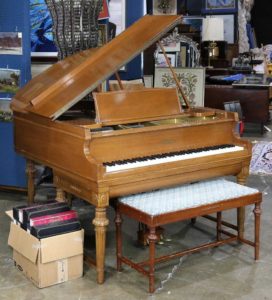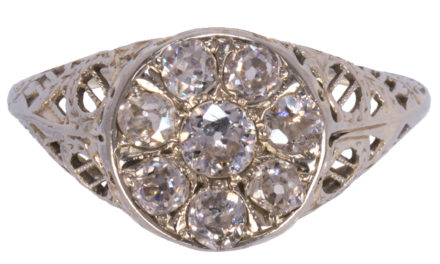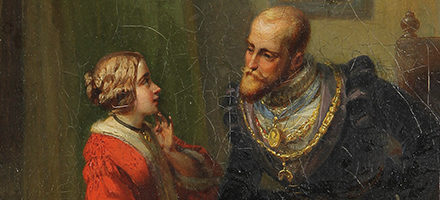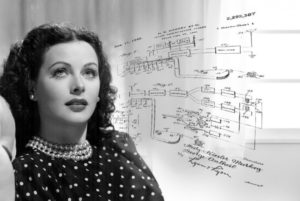 What do Hollywood bombshell Hedy Lamarr, World War Two submarine missiles, and player pianos have in common? Would you believe me if I told you WiFi?
What do Hollywood bombshell Hedy Lamarr, World War Two submarine missiles, and player pianos have in common? Would you believe me if I told you WiFi?
Hedy Lamarr (1914-2000) was born in Vienna, Austria. As a child, she competed in beauty pageants and took acting classes. By the time she was a teen, she was already staring in plays and movies. In 1937, Lamarr obtained a contract with MGM Studios and burst onto the American movie scene with the diamond heist drama Algiers (1938). Renowned for her beauty, Lamarr starred in over 25 films and even produced a handful herself, one of the first stars to do so. Despite her success on the silver screen, Lamarr grew bored with her unchallenging, hollow roles, often typecast as the foreign seductress with limited lines.
Off-screen, Lamarr was a whip-smart and creative inventor who had enjoyed tinkering since childhood. She kept a set of tools and supplies in her trailer so that she could invent between takes and famous director/aviator/engineer Howard Hughes credits her with helping him fine-tune the wing design of his airplanes. She had a brilliant mind and channeled her creative energy into a handful of marvelous inventions throughout her life. In her later years, she even pushed the envelope of cosmetic surgery and inspired her doctors to revolutionize procedures to minimize visible scarring.
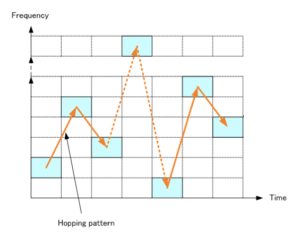
An illustration of Lamarr’s frequency hopping, where a single radio transmission “hops” frequencies. Image source: http://www.cdt21.com/resources/Modulation/modulation_SS.asp
As war broke out across Europe, Lamarr (who was of Jewish descent) felt an extreme obligation to help her country. She sold an extraordinary amount of war bonds and volunteered her time to entertaining US servicemen and women. But she wanted to do more, and inspiration struck when Lamarr discovered that the US Navy was struggling to contain the threat of German U-boats because US torpedoes, which relied on radio transmission for guidance, were being jammed by enemy interference. To combat the sabotage, Lamarr pioneered the concept of frequency-hopping.
Torpedo signals were being disrupted because they relied on one line of communication on one radio frequency. To counteract this, Lamarr invented frequency-hopping, or the ability to send a single radio transmission over multiple frequencies. This prevented radio signals from being blocked by enemy interference. In other words, if you’re driving your car down the highway but you’re forced to stay in one lane, you’ll get stuck in traffic or trapped behind the slow car in front of you (like a torpedo who relies on a single frequency for instructions). But if you’re able to change lanes through traffic or around slower vehicles, you’ll get where you need to be much faster (like a torpedo whose instructions are being sent via frequency hopping). Though this seems like common sense, no one had ever thought of it before. Lamarr, who had no formal schooling in engineering, was the first to invent it.
How do you make sure the torpedo and the ship that fired it are on the same frequencies at the same time to transmit the message? With the help of her friend George Antheil (a composer and pianist), Lamarr patented a miniaturized version of the roll mechanism used by player pianos that would aid in synchronizing the torpedo and its ship on the proper radio frequencies. This enabled the ship and the torpedo to make sure they were always on the right frequency at the right time. To help the war effort, Lamarr gave the patent to the military.
Unfortunately, the invention was not used by the US during the war. The first ships to rely on the technology to secure their radio transmissions were those deployed during the Cuban Missile Crisis in 1962. Frequency-hopping’s ability to securely transmit signals through space soon became a pivotal part of all secure military and civilian transmissions. The concept was key to developing Bluetooth technology and private WiFi networks. You have Hedy Lamarr to thank for the security of your house’s WiFi network. Despite this, Lamarr was never paid for her genius invention and was not even recognized for its brilliance until recently. In 2014, Lamarr was posthumously inducted into the National Inventors Hall of Fame.
And that is how one of Hedy Lamarr’s most successful and impactful inventions was inspired by World War Two torpedoes and player pianos and evolved into the secure WiFi technology the world relies on today.
To learn more about Hedy Lamarr’s extraordinary life, watch Alexandra Dean’s biographical documentary film Bombshell: The Hedy Lamarr Story (2017)
